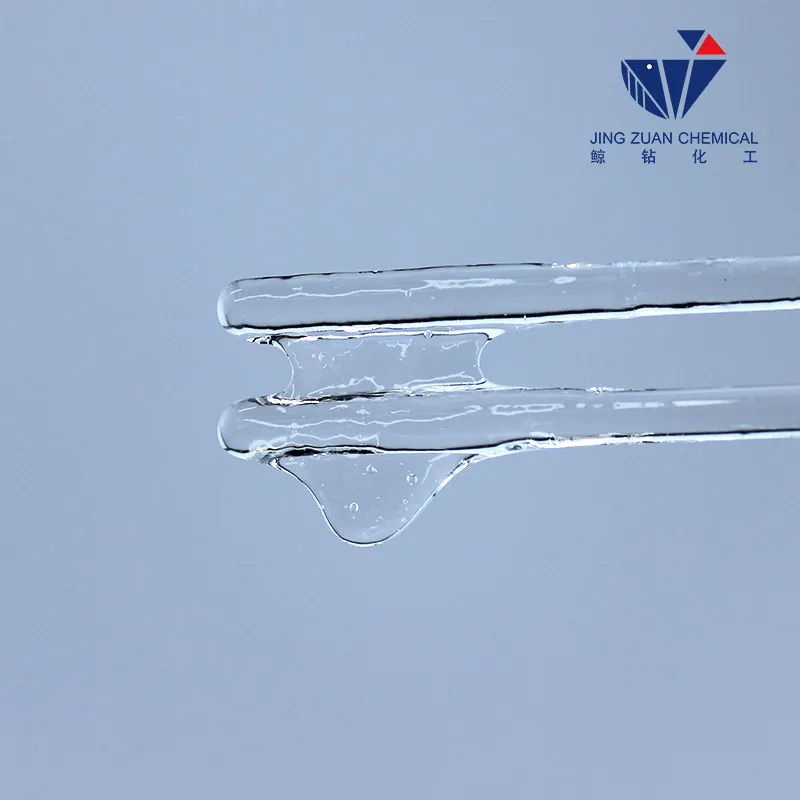
des . 17, 2024 03:19 Back to list
Hydroxyethyl Cellulose Powder Applications and Benefits in Various Industries
Hydroxyethyl Cellulose Powder An Overview
Hydroxyethyl cellulose (HEC) powder is a non-ionic, water-soluble polymer derived from cellulose. It is widely used in various industries due to its unique properties and multifunctional capabilities. This article aims to provide an in-depth understanding of HEC powder, its characteristics, applications, and benefits.
Chemical Composition and Properties
Hydroxyethyl cellulose is synthesized by the etherification of cellulose, where ethylene oxide reacts with cellulose to introduce hydroxyethyl groups into its structure. The resulting compound is a white, odorless powder that is soluble in water at room temperature, forming a viscous gel upon dissolution. HEC is known for its excellent thickening, emulsifying, and film-forming properties, which can be modified by adjusting the degree of substitution during the production process.
One of the most notable features of HEC is its superior viscosity stability across a wide range of temperatures and pH levels. This stability is crucial in many formulations, ensuring consistent performance and efficacy of the final product. Furthermore, HEC is biodegradable and derived from renewable resources, making it an eco-friendly alternative to synthetic polymers.
Applications of Hydroxyethyl Cellulose Powder
HEC powder finds its application in numerous fields, including pharmaceuticals, cosmetics, food, and construction. In the pharmaceutical industry, it is predominantly used as a thickening agent, stabilizer, and binder in formulations such as gels, ointments, and suspensions. Its ability to retain moisture and form protective barriers makes it ideal for preparing topical products that require enhanced adhesion and prolonged action.
In the cosmetics sector, HEC serves as an essential ingredient in skincare products, hair care formulations, and makeup items. It helps improve the texture and consistency of creams and lotions, providing a luxurious feel while aiding in the uniform distribution of active ingredients. Additionally, HEC is utilized as a thickener in shampoos and conditioners, enhancing the viscosity and performance of these personal care products.
hydroxyethyl cellulose powder

The food industry also benefits from hydroxyethyl cellulose, where it is used as a thickener, stabilizer, and emulsifier in various food products. Its ability to improve the mouthfeel and viscosity of sauces, dressings, and dairy products enhances the overall sensory experience of consumers.
In construction, HEC powder plays a crucial role as a thickening agent in cement and gypsum-based products. It improves the workability of mortars and plasters, preventing segregation and ensuring even distribution of materials during application. Moreover, HEC enhances water retention, allowing for prolonged working times and better finishing properties.
Benefits of HEC Powder
The use of hydroxyethyl cellulose powder offers several advantages across different applications. Its non-toxic and hypoallergenic nature makes it suitable for sensitive skin formulations, reducing the risk of irritation or allergic reactions. Additionally, as a biodegradable product, HEC provides a more sustainable option compared to synthetic polymers that may contribute to environmental pollution.
HEC’s versatility is another significant advantage. Its varying degrees of substitution allow formulators to tailor viscosity and other properties to meet specific requirements for a wide range of products. This adaptability makes HEC an invaluable ingredient in both consumer and industrial applications.
Conclusion
Hydroxyethyl cellulose powder is a multifunctional polymer that offers numerous benefits and applications across various industries. Its exceptional thickening, emulsifying, and binding properties, coupled with its environmentally friendly nature, make it a popular choice among formulators. As industries continue to evolve and innovate, the role of HEC in enhancing product performance and sustainability will likely expand, reinforcing its significance in modern formulations.
-
Versatile Hpmc Uses in Different Industries
NewsJun.19,2025
-
Redispersible Powder's Role in Enhancing Durability of Construction Products
NewsJun.19,2025
-
Hydroxyethyl Cellulose Applications Driving Green Industrial Processes
NewsJun.19,2025
-
Exploring Different Redispersible Polymer Powder
NewsJun.19,2025
-
Choosing the Right Mortar Bonding Agent
NewsJun.19,2025
-
Applications and Significance of China Hpmc in Modern Industries
NewsJun.19,2025







